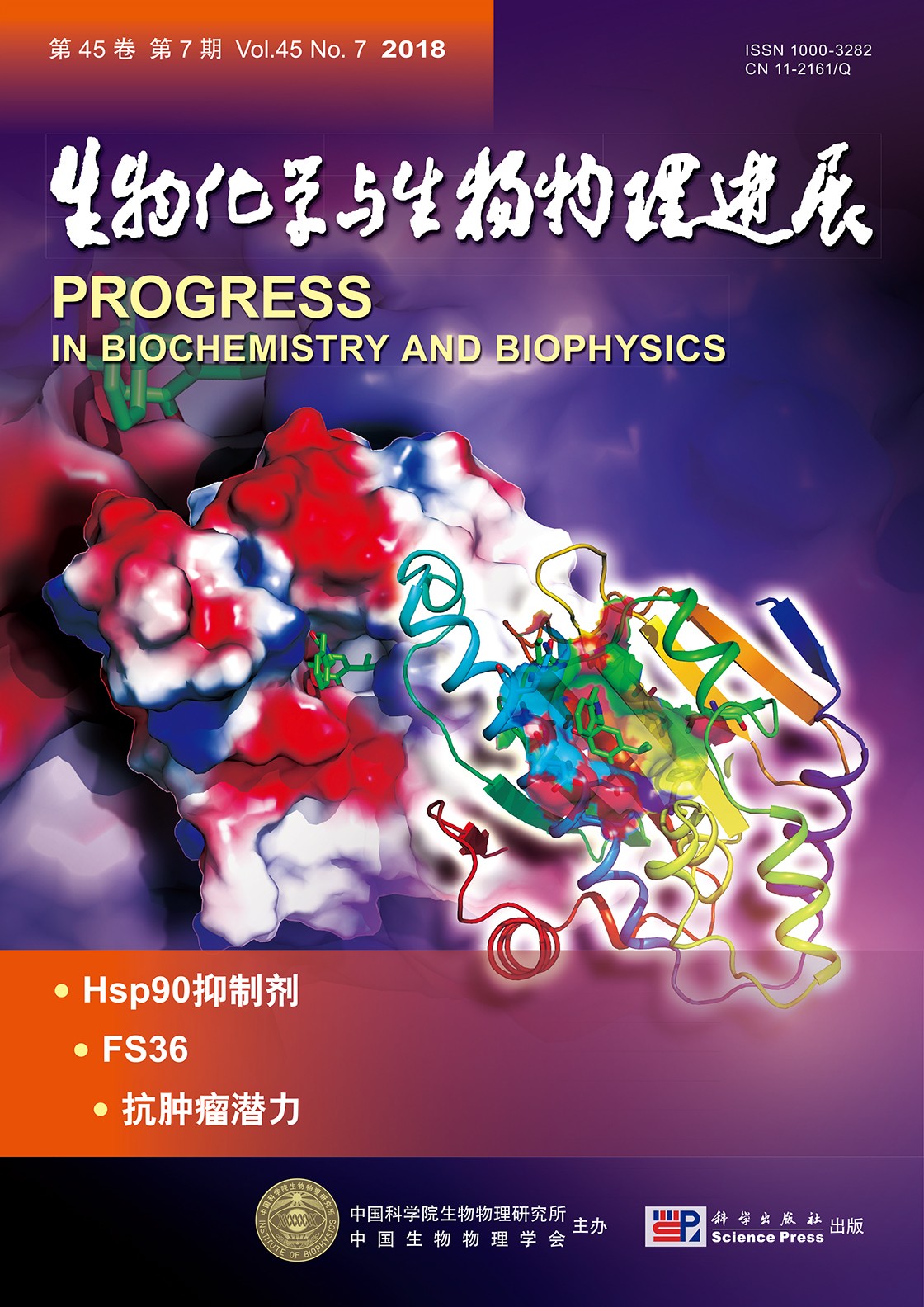2018年第45卷第7期目录
| |

|
封面故事:热休克蛋白90(Hsp90)是一种高度保守的分子伴侣,它已被证明是与许多异常蛋白质信号,如癌症、传染病和神经退行性疾病相关的潜在靶标.已报道的Hsp90抑制剂存在几个缺点,例如溶解度差,肝毒性,有限的代谢稳定性和动物体内的剂量限制性.因此,我们有必要努力设计更有效和更安全的Hsp90抑制剂.我们在近期通过FBDD方法设计并合成了Hsp90的新型小分子抑制剂:FS36.Hsp90的氨基端(Hsp90N)-FS36复合物晶体结构的X射线衍射实验数据和高分辨率X射线晶体结构表明FS36在ATP结合位点上与Hsp90N相互作用,并且FS36可能替代核苷酸来与Hsp90N结合.FS36和Hsp90N的复合物晶体结构和相互作用为后期设计和优化新型抗肿瘤药物奠定基础.
(李 根,吕凯凯,李 健,尹秀山,赵 栋,张万忠.FS36作为新型人源Hsp90抑制剂的发现,本期第736~744页)
Cover Story:The heat shock protein 90 (Hsp90) plays an important role in growth and progression of tumor cells through the appropriate folding, conformational maturation and activation of several hundred protein substrates (client proteins). Thus, Hsp90 attracts a great many of interests as a promising target for antitumor drugs which results in more than 20 inhibitors advancing to clinical trials. Here, we designed and synthesized a small molecule inhibitor: FS36 and the X-ray diffraction data of the complex crystal of Hsp90N-FS36 is collected. High-resolution X-ray crystallography shows that FS36 interacts with Hsp90N at the ATP-binding pocket and this demonstrates that FS36 possibly substitutes nucleotides to bind to Hsp90N. The complex crystal structure and the interactions between FS36 and Hsp90N lay the foundation of the design and majorization of novel antitumor drugs.
|
综述与专论
研究报告
技术与方法
新技术讲座
|
|